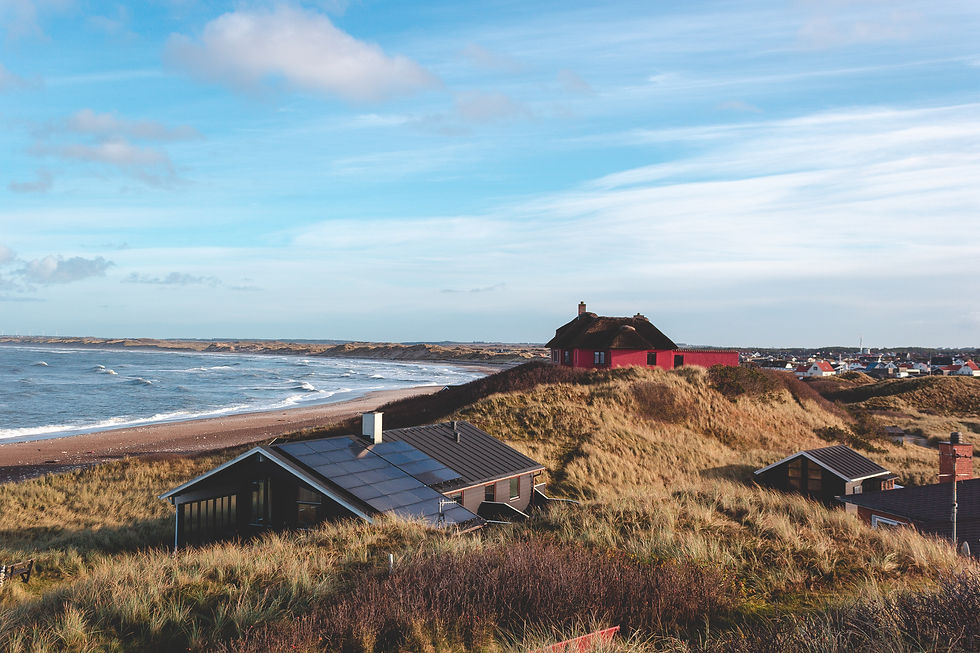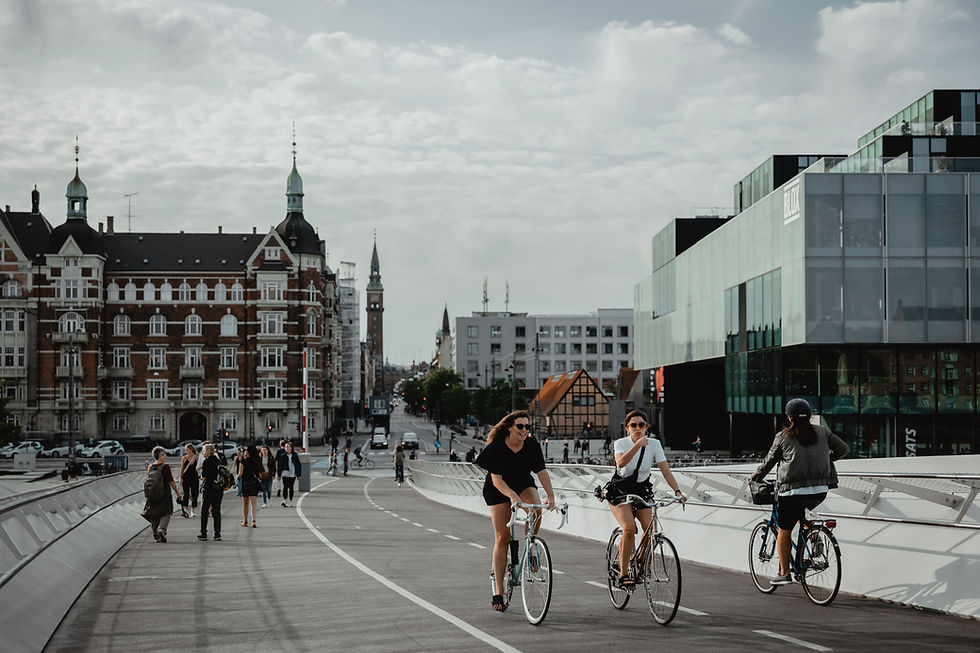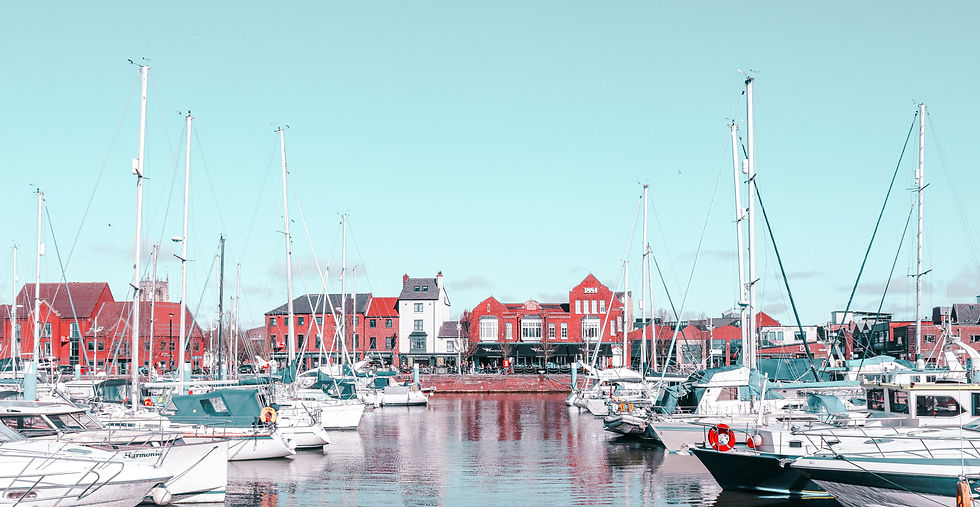Sustainable Urban Design: A Blueprint for Denmark's Future
- Thinking Urban

- 8月7日
- 讀畢需時 4 分鐘
Denmark is widely recognized as a leader in sustainable practices, especially in urban design. The country's commitment to eco-friendly structures and green spaces sets a standard for cities around the world. In this article, we will explore the principles of eco-friendly urban planning and how Denmark can further its sustainability goals through innovative design solutions.
Eco-friendly Urban Planning: The Vision
Eco-friendly urban planning focuses on creating spaces that harmonize with the environment while maximizing the well-being of its residents. This involves not only green buildings but also the integration of nature, sustainable transport options, and energy-efficient systems. An eye toward the future means addressing climate change, reducing carbon footprints, and fostering community well-being.
Denmark’s vision includes incorporating renewable energy sources into city infrastructure. By utilizing solar panels, wind energy, and geothermal heating, Danish cities aim to reduce reliance on fossil fuels. According to the Danish Energy Agency, wind energy alone provides over 47% of Denmark’s total electricity consumption. Imagine cities where clean energy flows seamlessly through neighborhoods, powering homes and businesses alike.

Principles of Sustainable Urban Development
Sustainable urban development encapsulates several key principles that help cities grow responsibly:
Resource Efficiency - Using materials that minimize waste and pollution, as well as designing buildings that use less energy.
Community Spaces - Creating parks and recreational areas that foster community engagement and promote healthier lifestyles.
Public Transport - Enhancing public transport systems to reduce car dependency, thus cutting down on greenhouse gas emissions.
Walkability and Biking - Designing neighborhoods that encourage walking and cycling.
By embracing these principles, cities can drastically improve air quality, reduce traffic, and enhance biodiversity. For Denmark, this means not just building but transforming its urban landscapes into vibrant ecosystems.
What are Examples of Sustainable Design in Cities?
Many cities in Denmark have taken innovative steps towards sustainable urban design. For instance:
Copenhagen has implemented an extensive cycling infrastructure, making it one of the most bicycle-friendly cities in the world. Over 62% of Copenhagen's residents cycle daily, which significantly contributes to reducing carbon emissions.
Aarhus, the second-largest city in Denmark, has launched the "Aarhus Letbane" project, a light rail system intended to connect different parts of the city while promoting sustainable transport.
Viborg has introduced green roofs and walls on many new buildings, which help to insulate structures, absorb rainwater, and provide natural habitats for urban wildlife.
These cities serve as prime examples of how sustainable urban design can effectively create greener, healthier urban environments.

Challenges in Implementing Sustainable Urban Design
Despite the successes, challenges remain in shifting towards sustainable urban design:
Funding - Many municipalities lack the financial resources to implement large-scale sustainable projects. Government investments, public-private partnerships, and EU funding can help bridge this gap.
Resistance to Change - Established communities may resist changes to their neighborhoods due to fears of gentrification or disruption. Engaging residents in the planning process can foster acceptance and collaboration.
Technology Integration - Implementing new technologies and systems requires significant research and development. Cities must consider how to integrate these systems seamlessly while ensuring longevity in their designs.
Denmark's commitment to addressing these challenges is crucial for achieving long-term sustainability goals.
Taking Action: Steps Denmark Can Take
Denmark can lead the way in sustainable urban design through actionable steps:
Promote Green Building Standards - Establish mandatory energy standards for new buildings. Incentives for retrofitting older structures with energy-efficient materials can drive renovations.
Enhance Green Spaces - Develop more parks and urban forests to improve air quality and provide recreational spaces for residents. The "Green City" initiative encourages the creation of multi-functional green areas.
Invest in Smart Technology - Implement smart grid technologies that facilitate energy consumption monitoring and increase the use of renewable sources.
Engage Communities - Foster inclusivity by involving citizens in the planning of urban spaces. Community workshops can create a sense of ownership and responsibility.
By focusing on these steps, Denmark can advance its urban design and sustainability initiatives, creating a model for other nations to follow.

The Future of Urban Design in Denmark
The future of urban design in Denmark looks promising. With continued investment in sustainable practices and community involvement, Danish cities can become resilient against climate change and enhance the quality of life for their residents.
This approach exemplifies what sustainable urban design can achieve: a harmonious blend of nature and urban life, a drastic reduction in carbon emissions, and a healthier, more vibrant society.
By adopting smart solutions and advocating for community-driven initiatives, Denmark can not only set an example for sustainable urban design but also establish a legacy of eco-conscious living for future generations.
As the world increasingly turns towards sustainability, Denmark is poised to lead in this vital area, proving that urban living and environmental stewardship can coexist beautifully.
For more detailed information on sustainable urban designs, please check out sustainable urban design.



留言